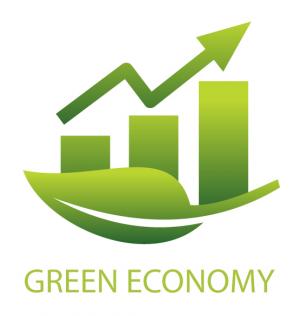Tokyo Cap-and-Trade Program
Description
Source: Tokyo Metropolitan Government
A unique feature of the Tokyo Cap-and-Trade Program is its targeting of office buildings and other buildings in the commercial sector. It covers large CO2 emitting facilities that consume energy in the amount of 1500 kiloliters or more (crude oil equivalent) per year. In effect, the program applies to about 1,300 facilities: in the commercial sector, about 1,000 office buildings, public buildings, and commercial facilities; in the industrial sector, about 300 factories and other facilities. The total emissions from targeted facilities account for 40% of all CO2 emissions from the commercial and industrial sectors in the Tokyo area.
The total cap on the targeted sector was set 6% below base-year emissions for the first compliance period (2010-2014), based on Tokyo's emissions reduction goal for 2020. The cap for the second period (2015-2019) is expected to be a 17% reduction below base-year emissions, taking into account future technological innovations, expected market efficiencies, and planning for long-term investments.
During the first period, covered factories are required to reduce their total CO2 emissions by 6% and office buildings with other facilities by 8 % from their base-year emissions. They are allowed to select the average of any three consecutive years from 2002 to 2007 as their own base-year emissions, an approach that allows flexibility and fairness based on their differing business conditions. A facility that has already achieved high energy efficiency can be certified as a ?Top Level Facility. For such a facility, the compliance factor is reduced to half or three-quarters, depending on a detailed review.
To achieve their required reductions, in addition to the introduction of energy-efficiency measures and renewable energy use at the site of the covered facility, each facility can purchase excess reductions from other facilities, as well as four types of offset credits; emission reductions from small and midsize facilities in Tokyo, renewable energy credits, emission reduction outside Tokyo area, and Saitama credits.
Facility owners that fail to meet the reduction obligations are required to cover 1.3 times the reduction shortfall, are subject to a fine of up to 500,000 yen, and will have their violation published.
SDGS & Targets
Goal 8
Promote sustained, inclusive and sustainable economic growth, full and productive employment and decent work for all
8.1
8.1.1
Annual growth rate of real GDP per capita
8.2
Achieve higher levels of economic productivity through diversification, technological upgrading and innovation, including through a focus on high-value added and labour-intensive sectors
8.2.1
Annual growth rate of real GDP per employed person
8.3
Promote development-oriented policies that support productive activities, decent job creation, entrepreneurship, creativity and innovation, and encourage the formalization and growth of micro-, small- and medium-sized enterprises, including through access to financial services
8.3.1
Proportion of informal employment in total employment, by sector and sex
8.4
Improve progressively, through 2030, global resource efficiency in consumption and production and endeavour to decouple economic growth from environmental degradation, in accordance with the 10-Year Framework of Programmes on Sustainable Consumption and Production, with developed countries taking the lead
8.4.1
Material footprint, material footprint per capita, and material footprint per GDP
8.4.2
Domestic material consumption, domestic material consumption per capita, and domestic material consumption per GDP
8.5
8.5.1
Average hourly earnings of female and male employees, by occupation, age and persons with disabilities
8.5.2
Unemployment rate, by sex, age and persons with disabilities
8.6
8.6.1
Proportion of youth (aged 15-24 years) not in education, employment or training
8.7
Take immediate and effective measures to eradicate forced labour, end modern slavery and human trafficking and secure the prohibition and elimination of the worst forms of child labour, including recruitment and use of child soldiers, and by 2025 end child labour in all its forms
8.7.1
Proportion and number of children aged 5‑17 years engaged in child labour, by sex and age
8.8
Protect labour rights and promote safe and secure working environments for all workers, including migrant workers, in particular women migrants, and those in precarious employment
8.8.1
Fatal and non-fatal occupational injuries per 100,000 workers, by sex and migrant status
8.8.2
Level of national compliance with labour rights (freedom of association and collective bargaining) based on International Labour Organization (ILO) textual sources and national legislation, by sex and migrant status
8.9
By 2030, devise and implement policies to promote sustainable tourism that creates jobs and promotes local culture and products
8.9.1
Tourism direct GDP as a proportion of total GDP and in growth rate
8.10
Strengthen the capacity of domestic financial institutions to encourage and expand access to banking, insurance and financial services for all
8.10.1
(a) Number of commercial bank branches per 100,000 adults and (b) number of automated teller machines (ATMs) per 100,000 adults
8.10.2
Proportion of adults (15 years and older) with an account at a bank or other financial institution or with a mobile-money-service provider
8.a
8.a.1
Aid for Trade commitments and disbursements
8.b
By 2020, develop and operationalize a global strategy for youth employment and implement the Global Jobs Pact of the International Labour Organization
8.b.1
Existence of a developed and operationalized national strategy for youth employment, as a distinct strategy or as part of a national employment strategy
SDG 14 targets covered
Deliverables & Timeline
Resources mobilized
Partnership Progress
Feedback
Action Network



There are currently no comments. Please log in to comment.